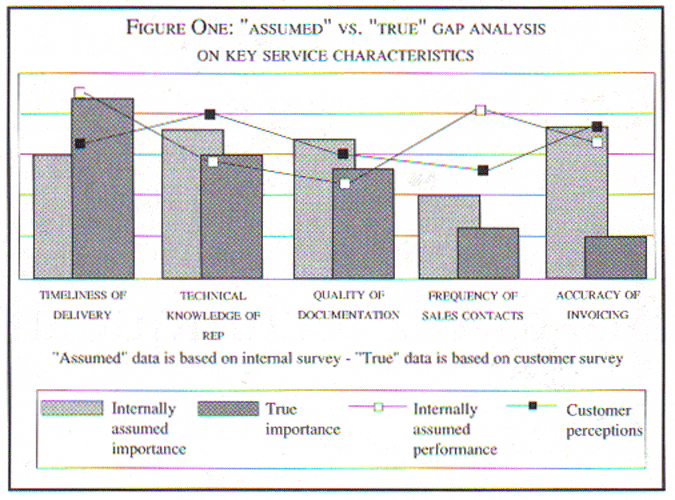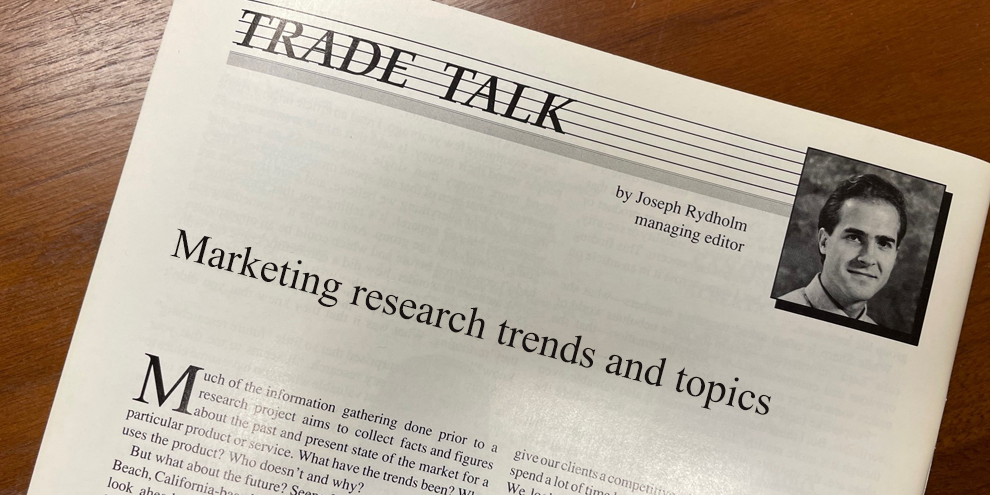There are many reasons why a customer satisfaction or total-quality program won't gain support within a company or organization: lack of money, organizational bureaucracy, fragile egos and even good old-fashioned inertia. One of the most powerful is employee skepticism. To make a quality program successful, the employees have to buy-in to the process.
That buy-in is critical, because management can talk all it wants about the benefits of total quality but if the employees - the people who deal with the customers - don't participate, the program is doomed.
Stephan Sigaud, president of IDSI, a New York marketing research and consulting firm that specializes in industrial and business-to-business markets, knows well the difficulty of convincing employees that the customer satisfaction research results he presents to them are worth their attention.
"We've experienced that when you work only with management, they are convinced that total quality is useful and that it should be done within the whole company. But the sales people usually aren't that convinced. They think it's fluff, that it doesn't really help with sales because they don't see the direct impact on getting new accounts.
"The problem is, after doing the research you come back with a picture of the market and you say, 'This is what your customers say you're doing right and doing wrong.' If you're talking to the business director, for example, he's probably going to believe you because he is far enough from the field that he'll have an objective view. But as soon as you talk to someone in marketing and sales you're going to have difficulty making them believe the research and act upon it because they'll tell you either, 'We knew that already' or, 'That's exactly what we thought.'"
Gap analysis
IDSI has created a technique for customer satisfaction research called gap analysis that's intended to head that stubbornness off at the pass. The technique gives a company a picture of the gaps that exist between how its employees view its service performance and how its customers view its performance.
Here's how it works: First, company employees fill out a customer satisfaction survey as they think the customers would, grading the company's performance in selected service areas. The employees must also indicate how important they think those service attributes are to their customers. Then, actual customers take the same survey and the two results are compared to find the gap between employee and customer perceptions.
"As soon as we're done developing the questionnaire for the customer survey," Sigaud says, "we administer it internally to our client's personnel, to everybody involved with customers - management, sales and marketing and also people in manufacturing and R&D. We ask them to fill it out as if they were customers. We ask them to rate the importance of the issues to customers and the performance of their own company in delivering those services."
Validate results
Involving the employees goes a long way to helping validate the results of the research done with customers and helps sell the employees on the value of being customer-driven, Sigaud says. "By doing the gap analysis, you're giving the employees the chance to participate up front. So when you come back to them a month or two months later with the recommendations, you've created a much better chance that they'll react to them the right way. By recording what they think up front, you have a baseline. And at the end of the project when you present the results, you avoid the I-told-you-so or this-confirms-what-we-thought attitude."
The employee surveys are done anonymously, so people can complete the surveys without fear that management will punish them for their candor. "So if you're a sales guy in the field and you have a very strong opinion, you're safe with your opinion. You can fill out the questionnaire without risk," Sigaud says.
Figure 1 shows an example of the results of gap analysis work. "In that case," Sigaud says, "our client had internally assumed that accuracy of invoicing was really important to their customers but the customers told us it was not very important. They had a pretty high customer satisfaction rating but it shows that you probably don't need to make your customers that satisfied in that area. So, take some of the resources you've put into accuracy of invoicing, since it's not that important, and put them back into quality of documentation, which is more important, and you'll probably see your ratings go up. It helps you focus your resources much better."
More importance
One client, Rohm & Haas, a specialty chemicals company based in Philadelphia, learned that clients placed more importance than it did on the certificates of analysis, which are forms that guarantee the composition of material being shipped to customers. "Rohm & Haas had missed the importance of the accuracy of these sheets to their customers. They had taken it for granted as another piece of paperwork and they had not paid it too much attention," Sigaud says.
Sometimes companies underestimate themselves, Sigaud says. "Rohm & Haas thought that customers had a very bad perception on timeliness of delivery. Therefore they were beating themselves up because they felt they weren't properly organized and they were wasting time and money trying to fix their delivery system. When in fact the study showed that the perception of the customers in terms of delivery was very good."
The power of hard figures is what helps gap analysis contribute to employee buy-in, Sigaud says. "If you are the business manager of a company and you have embarked on a total quality program and you're always facing that I-told-you-so attitude, you need something to convince your people. You need a quantified approach to sell anything in the industrial world. You're talking to engineers, they want numbers. Show them some good clear and powerful graphs, you're going to win a lot of agreement from people who would not be ready to work with you on something that's only words. If you give them the words, plus the numbers and the graphs, that's going to work much better."
